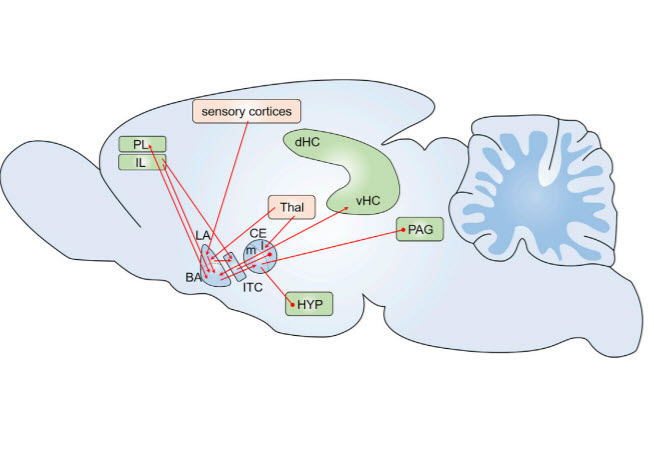
P3NL presenteert kennisbrief met negen onderzoeksprioriteiten
18 april 2019
Jaarverslag 2018 P3NL
3 mei 2019A psychotherapeutic regimen that uses alternating bilateral sensory stimulation (ABS) has been used to treat posttraumatic
stress disorder. However, the neural basis that underlies the long-lasting effect of this treatment—described
as eye movement desensitization and reprocessing—has not been identified. Here we describe a neuronal pathway driven
by the superior colliculus (SC) that mediates persistent attenuation of fear. We successfully induced a lasting reduction in
fear in mice by pairing visual ABS with conditioned stimuli during fear extinction. Among the types of visual stimulation
tested, ABS provided the strongest fear-reducing effect and yielded sustained increases in the activities of the SC and
mediodorsal thalamus (MD). Optogenetic manipulation revealed that the SC–MD circuit was necessary and sufficient to
prevent the return of fear. ABS suppressed the activity of fear-encoding cells and stabilized inhibitory neurotransmission
in the basolateral amygdala through a feedforward inhibitory circuit from the MD. Together, these results reveal the
neural circuit that underlies an effective strategy for sustainably attenuating traumatic memories.
A treatment called eye-movement desensitization and reprocessing alleviates
post-traumatic stress disorder through enigmatic mechanisms. A study in mice
offers potential clues into the biological basis of this approach.
Threat processing is central to understanding debilitating fear- and trauma-related disorders such as posttraumatic
stress disorder (PTSD). Progress has been made in understanding the neural circuits underlying
the ‘‘engram’’ of threat or fear memory formation that complements a decades-old appreciation of the neurobiology
of fear and threat involving hub structures such as the amygdala. In this review, we examine key
recent findings, as well as integrate the importance of hormonal and physiological approaches, to provide
a broader perspective of how bodily systems engaged in threat responses may interact with amygdala-based
circuits in the encoding and updating of threat-related memory. Understanding how trauma-related memories
are encoded and updated throughout the brain and the body will ultimately lead to novel biologically-
driven approaches for treatment and prevention.



